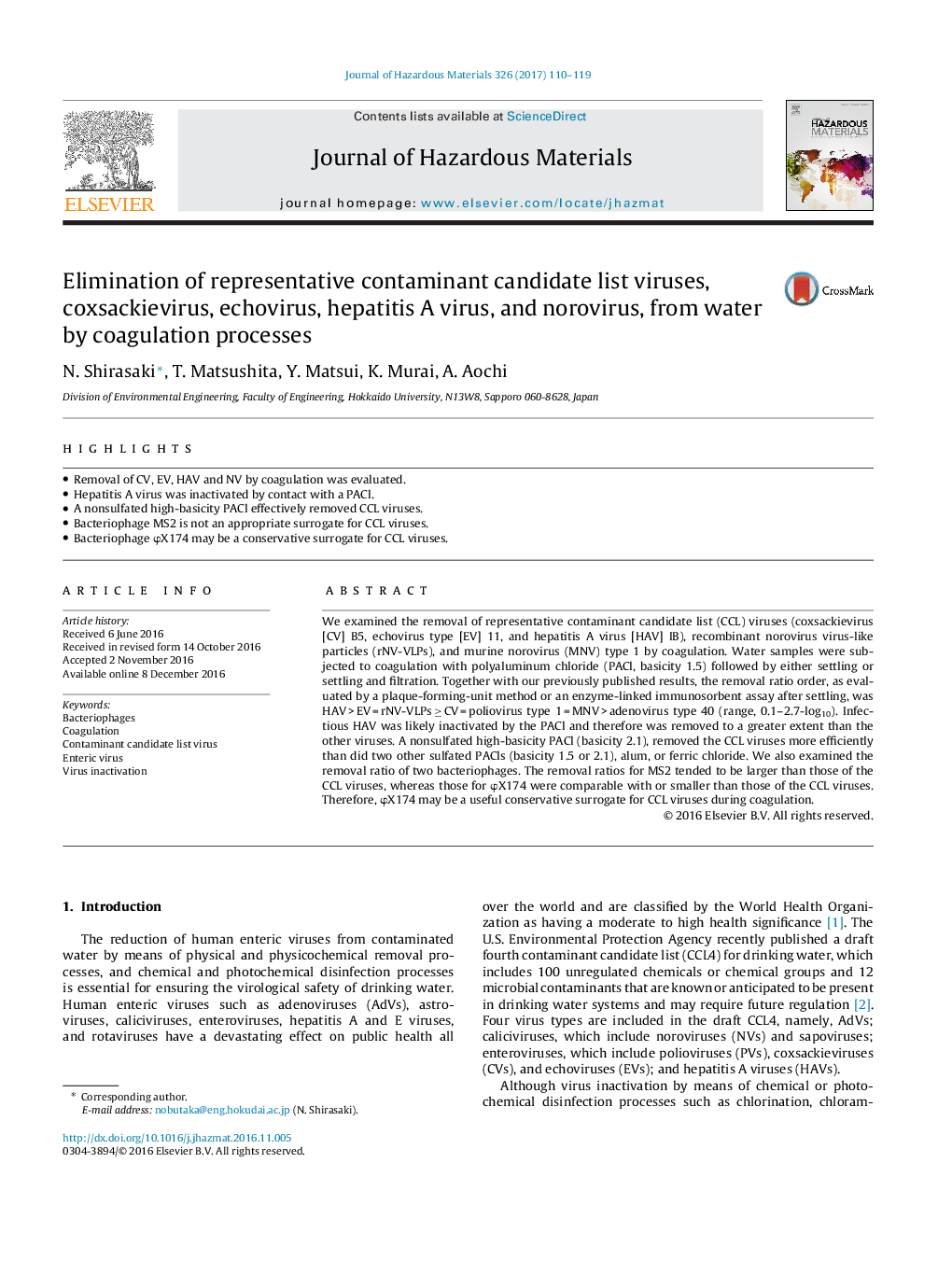| Article ID | Journal | Published Year | Pages | File Type |
|---|---|---|---|---|
| 4979766 | Journal of Hazardous Materials | 2017 | 10 Pages |
Abstract
We examined the removal of representative contaminant candidate list (CCL) viruses (coxsackievirus [CV] B5, echovirus type [EV] 11, and hepatitis A virus [HAV] IB), recombinant norovirus virus-like particles (rNV-VLPs), and murine norovirus (MNV) type 1 by coagulation. Water samples were subjected to coagulation with polyaluminum chloride (PACl, basicity 1.5) followed by either settling or settling and filtration. Together with our previously published results, the removal ratio order, as evaluated by a plaque-forming-unit method or an enzyme-linked immunosorbent assay after settling, was HAV > EV = rNV-VLPs â¥Â CV = poliovirus type 1 = MNV > adenovirus type 40 (range, 0.1-2.7-log10). Infectious HAV was likely inactivated by the PACl and therefore was removed to a greater extent than the other viruses. A nonsulfated high-basicity PACl (basicity 2.1), removed the CCL viruses more efficiently than did two other sulfated PACls (basicity 1.5 or 2.1), alum, or ferric chloride. We also examined the removal ratio of two bacteriophages. The removal ratios for MS2 tended to be larger than those of the CCL viruses, whereas those for ÏX174 were comparable with or smaller than those of the CCL viruses. Therefore, ÏX174 may be a useful conservative surrogate for CCL viruses during coagulation.
Related Topics
Physical Sciences and Engineering
Chemical Engineering
Chemical Health and Safety
Authors
N. Shirasaki, T. Matsushita, Y. Matsui, K. Murai, A. Aochi,
